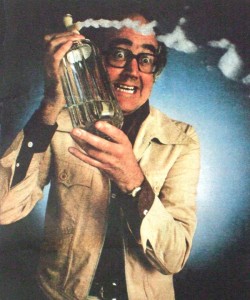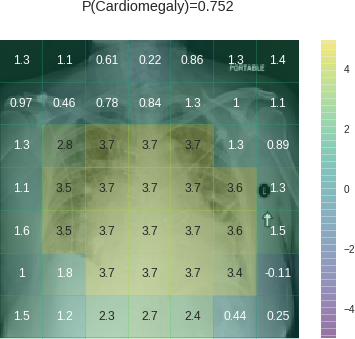James Burke came up in conversation the other day. You know, the British science reporter who hosted the late 1970s Connections TV series?
On the show, he globe-hopped from one scene to the other, always wearing the same white leisure suit, weaving a tale of technological invention that would span disparate events - show for example, how the Jacquard loom or the Napoleonic semaphore system led to the mainframe or the fax machine.
Its hard to pick up a popular science book these days that doesn't owe something to Connections. Burke of Connections had cosmic charisma - in his hands, Everything is connected to Everything. You'll hear that again.
Today I picked up Connections (the book that accompanied the series), looking, this being Christmas, illuminations. Not just the connections - but how the connections are connected. Cause its been a search for me over many years - I've stumbled and bumbled, but I have never been knocked on my heels more than this year, 2018.
And Burke delivered: It's not just about the connected, but also about the unconnected. How things happen: "The triggering factor is more often than not operating in an area entirely unconnected with situation which is about to undergo change," he writes. [Connections, p.289]
This seems to me today pertinent. Because the year just past was one where some among my interests (horse race handicapping and predictive analytics; Facebook, feedback, news and agitprop, and the mystic history of technology) seemed to defy understanding.
You see, you look close, and you analyze, but there is a cue ball just outside your frame of reference that will break up the balls. It is a dose of nature - dose of reality - a dose of chaos. In horse racing it can be quite visible when a favorite bobbles at the start, or a hefty horse takes a wide turn and thus impels another horse a significant number of paths (and, ultimately, lengths) wider. We (journalists, handicappers, stock market analysts) generally predict by looking in the rear view mirror, because we don't have a future-ready time machine.
I had the good fortune to cover events that Burke keynoted. There was OOPSLA in Tampa in 2001 (less than a month after 9/11 terror attack). And their was O'Reilly Strata West in Santa Clara (?) in about 2013 (?), at which the O'Reilly folks kindly set up a small press conference with Burke for media his keynote.
Burke is adamant that inventors do not understand all the ramifications their inventions will have in society in practice. One thing I tried to press him on was the role of the social structure (in our case the capitalist system) has in technology's development. He'd just gotten off a transatlantic cross continental flight, and delivered a startling keynote, before sitting down with press ( he was asked would he like some coffee, and he said that in his time zone it was time for wine), and Jack's questions did not so resonate.
My notes thereof are a bit of jumble... Everything is connected to everything. He said of Descartes… and his fledgling scentific methods... he "froze the world.." with reductionist - which may have value but which, as forecasters, pundits, and handicappers have found, "doesn’t tell you how all the parts work together."
"For the future we have no paradigm."
Screaming from the conversation with Burke, was a quote, actually from Mark Twain.
On the show, he globe-hopped from one scene to the other, always wearing the same white leisure suit, weaving a tale of technological invention that would span disparate events - show for example, how the Jacquard loom or the Napoleonic semaphore system led to the mainframe or the fax machine.
Its hard to pick up a popular science book these days that doesn't owe something to Connections. Burke of Connections had cosmic charisma - in his hands, Everything is connected to Everything. You'll hear that again.
Today I picked up Connections (the book that accompanied the series), looking, this being Christmas, illuminations. Not just the connections - but how the connections are connected. Cause its been a search for me over many years - I've stumbled and bumbled, but I have never been knocked on my heels more than this year, 2018.
And Burke delivered: It's not just about the connected, but also about the unconnected. How things happen: "The triggering factor is more often than not operating in an area entirely unconnected with situation which is about to undergo change," he writes. [Connections, p.289]
This seems to me today pertinent. Because the year just past was one where some among my interests (horse race handicapping and predictive analytics; Facebook, feedback, news and agitprop, and the mystic history of technology) seemed to defy understanding.
You see, you look close, and you analyze, but there is a cue ball just outside your frame of reference that will break up the balls. It is a dose of nature - dose of reality - a dose of chaos. In horse racing it can be quite visible when a favorite bobbles at the start, or a hefty horse takes a wide turn and thus impels another horse a significant number of paths (and, ultimately, lengths) wider. We (journalists, handicappers, stock market analysts) generally predict by looking in the rear view mirror, because we don't have a future-ready time machine.
I had the good fortune to cover events that Burke keynoted. There was OOPSLA in Tampa in 2001 (less than a month after 9/11 terror attack). And their was O'Reilly Strata West in Santa Clara (?) in about 2013 (?), at which the O'Reilly folks kindly set up a small press conference with Burke for media his keynote.
Burke is adamant that inventors do not understand all the ramifications their inventions will have in society in practice. One thing I tried to press him on was the role of the social structure (in our case the capitalist system) has in technology's development. He'd just gotten off a transatlantic cross continental flight, and delivered a startling keynote, before sitting down with press ( he was asked would he like some coffee, and he said that in his time zone it was time for wine), and Jack's questions did not so resonate.
My notes thereof are a bit of jumble... Everything is connected to everything. He said of Descartes… and his fledgling scentific methods... he "froze the world.." with reductionist - which may have value but which, as forecasters, pundits, and handicappers have found, "doesn’t tell you how all the parts work together."
"For the future we have no paradigm."
Screaming from the conversation with Burke, was a quote, actually from Mark Twain.
In the real world, the right thing never happens in the right place and the right time. It is the job of journalists and historians to make it appear that it has.”



















